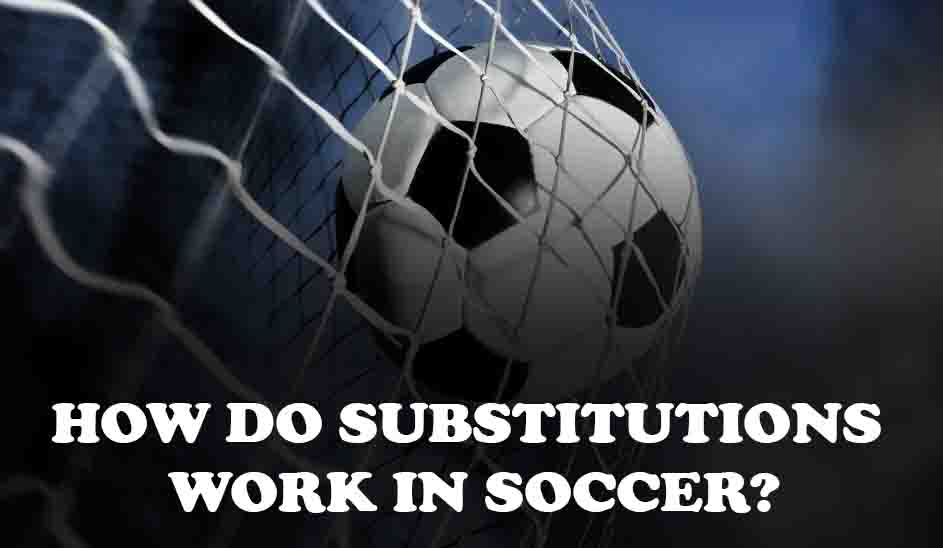If you’ve ever played soccer, you’re familiar with the concept of substitutions. However, most people don’t know how this strategy works and how to make it work for them. In this post, we’ll discuss the basics of how substitutions work in soccer, how you can use them to your advantage, and how you can get more out of your team.
In this post, we give you an introduction to soccer substitutions and how they work in the game. We also show you some useful tactics that can help you win games.
Table of Contents
A Brief History on Soccer Substitutions
Early in the 1800s, substitutes were part of the soccer game to replace players who didn’t show up to play. If a player did not show up to play, the team would substitute for another player on the pitch. The Laws of the Game first added in a rule to allow a substitute to enter the field to replace an injured player in 1958. Before 1970, World Cup Finals games were won by the teams with the highest aggregate score, which meant that substitutions were not an option.

The number of replacements for the Senate seat held by Democrat Carol Moseley Braun increased from one to three and then two. It took another seven years, but this year the World Cup will have at least four subs per match, even in extra time! With the Covid-19 pandemic, FIFA and the iFAB have allowed five substitutions during the season. There are many different reasons why having more subs is due to the shortening of time between games, including the loss of revenue and player availability. FIFA and IFAB have decided to allow 12 subs per game for the 2019 FIFA Women’s World Cup, but only 11 per game for the men.
How Do Teams and Coaches Make Subs During a Professional Soccer Game?
A team of eleven players is formed from eleven players (also called the starting lineup) playing together. During the 90 minutes of play, soccer players can make subs. The head coach must alert the assistant soccer official to start the substitution process by calling for the new player and number of substitutions. There are only two things that happen next: a stoppage occurs in play (like when the ball hits the ground) or a substitution happens.
This means that the referee holds a sign or signals a substitute taking place between two or more players. A soccer coach can also substitute during a half, but he or she must notify the referee of the change. Although it’s allowed in some situations, a soccer team can’t substitute a player during extra time without the referee’s permission.
What are the Etiquette Rules of a Soccer Substitution?
If you are the player coming off the bench to take over for an injured player, you must wait for the referee to signal your ability to enter the soccer pitch. Players who decide to join the game before the referee signals the change will get a yellow card. It’s the substitute who’s coming in the next time the ball is played who must wait until the player he is replacing has left the field of play. From there they have to wait for the referee to signal that they can come into the game before going on the field.
What Laws of the Game Dictate the Number of Subs During a Match?
Rules 2 and 3 of the Laws of the Game permit substitutions in both halves of a soccer match. When a player is sent off during a game, they have to leave the pitch. That means that the team plays with one fewer player. During the coronavirus pandemic, a rule change went into effect to increase the number of substitutions in soccer to five. The Premier League kept their three sub-rule and did not opt for the five even though they had the chance during the pandemic season.
Why Make a Substitution During a Soccer Game?
Some soccer fans play fantasy sports in order to improve their team by acquiring better players to add to their squad, but are unsure how to do it the right way. An injured player needs to be taken off the field to get treated, so someone else has to step in. The team could only use two subs. If the team uses both subs, they can still make that substitution, but they will have to use eleven players.
Second, some players might struggle against the opposing team, whether they’re on offense or defense. If the coach notices that a player is getting beaten to the ball or having a hard time defending an opposing player, the coach could make a change.
Football (soccer) coaches substitute a player when he receives a yellow card during a game. If that same player gets two yellow cards during that game, they will be ejected from the match. If they receive a red card, it is not as serious and they can play on. When a team loses a player from their team because of a yellow card, the coach usually gives another player a free kick in their place to substitute, or sub them in.
Can a Player Come Back into a Game After a Substitution?
According to the soccer rules in Law 3, once a player comes out of the game via a substitution, he can’t return to the field for the remainder of the game. Baseball allows a player to return to play if they leave the game for any reason. If you have a child who is in the middle school or youth soccer leagues, then you know that it’s a good idea to give them some time to recuperate.
How Many Substitutions in Youth Soccer Game?
Youth sports leagues have unlimited substitutions during a game. More and more youth sports teams have introduced an endless subs rule so that more kids can play. The way to win the games is by using many substitutes, allowing other players to play.
Conclusion
In conclusion, a substitution in soccer is when a player takes the place of another player on the field. This can happen if the player that is substituted out of the game is injured or if the coach wants to give a player a rest. The substitution is made by the referee, who calls the substitution over the public address system. The player that is being substituted in must leave the field and then return to the bench. The player that is substituted in will usually be replaced by a player from the opposing team.
